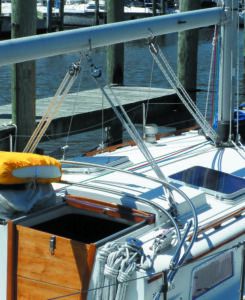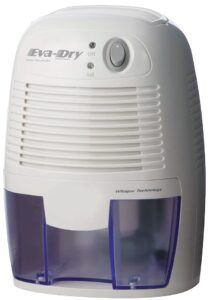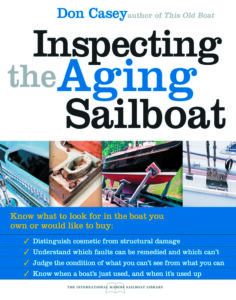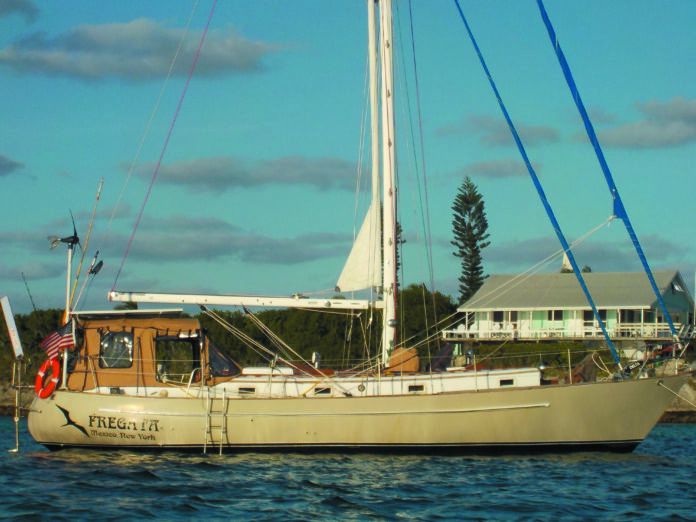SPLIT MAINSHEET
Regarding your recent report on split mainsheets (see PS November 2020, “Do Twin Mainsheets Better Control the Mainsail?”), if you attach the preventers/ sheets to the toe-rail just aft of the side chain plates and attach/ use two boom bails to separate load on the boom, you will have control of the mainsail all the way out over the water. There are no dangerous lines in the cockpit. You can’t have a dangerous accidental jibe because all jibes are controlled safe events. And control lines can be run along the side deck into the cockpit. I’ve been using that system for decades and installed it on several boats successfully.
Capt. David Quakenbush
Valiant 40, SV Fregata,
Mexico, New York

MULTIHULL’S SPLIT MAINSHEET
Regarding your recent discussion of split mainsails, I’d like to describe what I have on my boat. It won’t be for everyone, because my trimaran is a center cockpit, Jim Brown design, so I don’t have the problem of the lines draping over the cockpit when sheets are eased. My points of attachment are about 7 feet apart. Boom height is about 5 feet. I originally had a singleline system with 3 blocks on the end of the boom, but that always sought its own level, like water, and would not stay where I wanted it. After looking at a Catana at Raiatea with the twin, and separate, set up, I cut the sheet in two and ran it through a fiddle on top and fiddle with becket on bottom on each side (for a 3:1 purchase I believe). The sheets come to a deck organizer on center, then through a double rope clutch and to a single, small, 2-speed winch, all of which, I can reach easily from the wheel. When jibing, I put one wrap of each sheet on the winch, clutches closed, and haul together. When the leeward one reaches vertical, and stops, I take the slack out of the windward one and I’m ready for jibing. Pulling both stops a ton of slack from laying around the deck and causing problems. I also had to reinforce under my deck attachments as the loads when the leeward one is vertical are pretty strong. I have a tackle vang, but when sheets are eased, I take a preventer out to a midships cleat and back to a winch, so then have a 3-point hold on the boom end. Having raced for many years, I really did not want a traveller with all the lines, winches and tackles. When going to weather, or close reach, it’s easy to put the sheet that needs adjusting on the winch and give it a tweak. A couple of improvements that I’m thinking about when I get to return to the boat (currently in New Zealand while COVID keeps us stuck here in US) is to have two sheets of different colors. There’s a lot of white line spread around sometimes. Also thinking about having only two feet, or so, of tackle and 4-5 feet of Dyneema strops to the boom. This would save about 20 feet of sheet length but it might have some blocks sailing around if the jibe got out of hand. Overall, the system works really well for me and mainsail trim is where I want it.
Tony Spooner
Jay Haskins trimaran, SV Macha,
currently in New Zealand
TWIN SHEETS ON A CATANA 44
My wife and I have been living for 11 years aboard a 1997 Catana 44 with a twin sheet main. On our first crossing from Ft. Lauderdale to Bimini in 2010 we noticed the single-point attachment of the mainsheet dead end and turning block was flexing the coaming under load. We pulled the deck rings from the coaming and used a hole saw to remove the fiberglass skin and discovered the coaming balsa core was saturated. We dug out all the wet core and filled the space out to about twice the diameter of the deck ring bases with glass mat and epoxy, and enlarged the backing plates. We also added a second hard point for each sheet so that each dead-end tied off on the original ring and the turning blocks on new ones, set three feet wider than the originals. These hard points were also set on the coaming after replacing the balsa core as on the originals. This change halved the load on the coaming rings, and substantially improved our ability to tweak the main with the wider spread of the mainsheet dead ends and turning blocks.
Jack Hayden
Catana 44
Currently in Grenada
MAINSHEET WITHIN REACH
One issue you don’t address in your twin mainsheet report is ease of access to both main sheet and traveler when you’re at the helm or tiller, i.e. right at the stern of the boat. This wasn’t a problem with my J/24 as both traveler and main sheet are right at the helm/ tiller, and so control of the main is extremely easy and convenient, and safe. But surely if the main is controlled from a traveler on the cabintop, this means that on most boats you must leave the helm to adjust the mainsheet and/or traveler?
If sailing single-handed, especially when entering/leaving port or a river or anchorage, having to leave the helm to go forward to the cabintop to adjust the mainsheet and/or traveler is surely a big inconvenience, maybe even dangerous? I would have thought that in this situation, a twin mainsheet leading to each quarter near the tiller or wheel where the helmsman can easily adjust the main – would be invaluable – and far safer/more practical than trying to adjust the mainsheet and/or traveler on a cabintop.
So in short-handed situations, especially in confined waters where maybe quite a bit of tacking/jibing is required, or spilling wind from the mainsail – surely this is where twin sheets led aft would really shine?
Michael John Northmore
via PS Online
DRYSUIT ZIPPERS
Regarding your recent blog on drysuits (Inside PS “Details to Look for in Drysuits”) I left something important out from above. Let’s look at the ingress/egress zipper. Having owned four dry suits over the years, a brass zipper works best. My current one is a YKK. Suits are designed and built around the main zipper. Plastic zippers will often wear out and fail before the rest of the suit. Replacing this zipper is both time consuming and expensive. Many companies will not do it and recommend that you get a new suit, which is why I recommend going with brass. They are not as flexible as plastic and a bit harder to close that last one inch, but will generally last as long as the rest of the suit. Some say a salt environment will corrode the brass. If properly maintained, it will not corrode. I use Nik Wax zipper care, and I don’t mind swimming in saltwater, which I do once in awhile to test everything. Just be sure and rinse off in fresh if you can spare the water.
Bruce McElya
via PS Online
SOCIAL MEDIA SAILING
Regarding your recent editorial “Are We Taking Sailing Tales to the Extreme?” I think social media sailing falls in to two camps: One is actual sailors going on actual voyages to interesting places. This is the minority but still forms a hot nucleus of content that I think we can all be proud of. The second camp is the eternal revolving door of the “cute young couple” who buy a boat and spend years rebuilding it. They never really seem to go much of anyplace and do nothing more than paint and grind. Often at the end of it, they sell the boat and either move ashore (so they can film themselves rebuilding a house) or they buy yet another boat (which they can rebuild). If you look around, there is genuine hard core sailing content out there.
Ryan McNabb
1972 Contest 31
Chattanooga, TN
RACING FINISH ANTIFOULING TIPS
Summer of 2020 I had the bottom of my Baltic 51 media-blasted and then my friends and I did the bottom job. We used Pettit Interprotect. As per the instructions, we calculated the volume required to give the appropriate thickness. We put on a couple of coats with the recommended nap rollers, then we faired the bottom with either west system epoxy plus micro balloons for the deepest imperfections. We rolled on all but the last 2 coats and then we then skim-coated the entire bottom with the Interlux Watertite filler, and sanded the bottom with 80 grit. We also replaced some fairing on the lead keel. We then rolled on the last two coats (no thinner) with foam rollers followed by Sea Hawk Biocop TF. We spent about 400 man-hours doing this after the media blasting. This gave us an excellent racing bottom.
Gary Nackman
High Note, Baltic 51,
Perth Amboy, NJ.
PROPANE CUTOFF TRICK
Regarding your fire extinguisher safety tips (see “Fire Extinguisher Tips, PS October 2017), I installed a “momentary on” switch behind my fire extinguisher, as it was bracketed to the galley wall. This switch was in series with the switch that opened and closed the solenoid on the propane tank. If the extinguisher was removed from the mounting bracket, the “momentary” switch was released, opening the circuit, and closing the propane tank solenoid valve. (Note: a momentary on switch is always “off” in the released/ extended position, and “on” while depressed—in this case by the extinguisher body).
Jeremy Smith
via PS Online
STAYING TETHERED
Regarding your report “Cold Water Survival” (see PS February 2021), “I used to rock climb, a lot of it in Yosemite. My view is that going on deck (or standing in the cockpit) without being tethered is like climbing without a rope. If there’s any boat motion at all, and especially when the water is cold, I tether. And I always keep a hand hold– going over even tethered also has fairly grim probabilities. And it takes some experience to learn how to work with the tether(s), so doing it “unnecessarily” is actually good practice.
Michael Ransom
via PS Online
With winter upon us, and boats sitting on the hard in many places, it’s a good time to troubleshoot or update systems, and to make a to-do list for the off-season and pre-season.
STAY UP TO DATE
It’s never a bad time to update the software for your onboard electronics, but before you do, be sure to read the “Pain-free Marine Electronics Update” blog post (Inside Practical Sailor, March 31, 2015), as well as the May 2015 article, “Playing with Cards,” an extensive look at which digital-media storage cards are compatible with various marine electronics.
DRY STORAGE
Looking for ways to keep your cabin dry during off-season storage, and to prevent that musty, mildew smell? There are a number of de-humidifying methods and products available, but good ventilation is the most effective. Other options include electric dehumidifiers (PS June 2013) and absorbent chemicals, or desiccants (PS November 2012). Testers evaluated anti-mildew protectants in the November 2013 issue and mold-inhibiting products in June 2010, as well as commercial mold-cleaning products in the January 2009 issue.

BOAT STINK
If you’re battling boat stink of the holding-tank variety, be sure to read our tips for stopping stink in the May 21, 2015 blog post, along with the many sanitation system product tests we’ve done in recent years. The December 2013 issue offers a 30-month update on sanitation hose and holdingtank vent filter tests; we reviewed holding tank treatments in the February 2012 issue; and offered advice on cleaning holding tanks in the November 2015 PS Advisor. You’ll find some of these articles and other useful info in our Marine Sanitation ebook series, which is available at www.practical-sailor.com/books.

GIFT SHOPPING
Did those holiday gifts fall flat? A do-over is easy at PS online. Be sure to browse through our past Chandlery articles, which highlight new and innovative sailing gear. If you’re short on time, check out our online bookstore, www.practical-sailor.com/books, where you can select from the dozens of sailing resources that PS editors recommend, as well as Practical Sailor’s ebooks and subscription products.





































